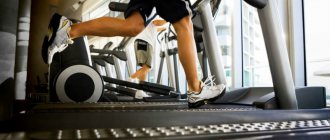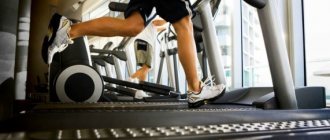Author: Margarita Popova, adaptive physical education specialist, training department specialist #Sekta
Getting up, a glass of water, morning work, breakfast - this is how the day of many students and graduates of our School begins. Morning workout on an empty stomach is one of our oldest recommendations. It appeared back in the days of LiveJournal and is still successfully used today.
Often, as soon as students notice the results of short morning workouts, they begin to lengthen their workouts, bringing them to 45 - 60 minutes or replacing them with a long morning run on an empty stomach. In this way they hope to get the greatest result.
Fasted training seems like a very attractive prospect. During the night, the body almost completely depletes glycogen (energy) reserves in the muscles. Since there is no glycogen, physical activity should, as it were, provoke the body to take the necessary energy from fat reserves. It sounds logical, but in reality it works differently. In this article we will analyze this misconception and tell you why short morning exercises are effective.
Scientific experiments
Before moving on to the analysis of research, let’s remember the mechanism of fat burning:
- Mobilization The use of fat as an energy source begins with its release from fat depots into the bloodstream. At this moment, triglycerides located in fat cells are broken down into fatty acids and glycerol and released into the bloodstream.
- Transport Fatty acids released into the blood are transported to the site of “burning” (oxidation).
- Oxidation The final oxidation of fatty acids to produce energy.
Long-term cardioA study on the effectiveness of long-term cardio before breakfast in burning fat was published in 2011 in the Strength and Conditioning Journal. A group of people with average training who regularly engage in fitness was considered. It turned out that when training on an empty stomach, fatty acids are actually released from the cell faster. However, the rate of oxidation (i.e. burning) remains the same both when training on an empty stomach and after a carbohydrate meal. Conclusion: When you exercise on an empty stomach, you burn the same amount of fat, not more.. |
Cardio and CarbohydratesIn the second study, participants performed 4 workouts on an exercise bike, alternating intensity: participants worked moderately for 2 hours, after which they accelerated as much as possible. During training, participants consumed placebo and carbohydrates before and during exercise in different orders. The goal of the scientists was to find out whether carbohydrate consumption affects the rate of fat oxidation. Several schemes have been tried:
Ultimately, there was no evidence that consuming carbohydrates before or during exercise had any effect on the rate of fat oxidation. The author of the study also emphasizes that the amount of fatty acids released during training on an empty stomach is several times greater than the body is able to break down and use as an energy source during this time. Unbroken (unoxidized) fatty acids are converted back into fat tissue, which minimizes the effect of fasted training. This proves that long-term cardio after eating is just as effective as doing it on an empty stomach, but is safer, especially if you're a beginner . |
Before breakfast or after?Another 2014 study, published in the Journal of the International Society of Sports Nutrition (JISSN), compared fasted and postprandial training, its effects on cellular fat release and oxidation, and the resulting impact on the exerciser's body composition. The participants followed the same program three times a week for an hour for a month and followed a diet with an energy deficit of 500 kcal. The first group of trainees did the workout on an empty stomach before breakfast, the second group did the workout after eating. By the end of the experiment, the exercisers experienced the same changes in body composition, regardless of whether they trained before or after breakfast. |
Is it worth doing?
| Behind | Against |
| Faster burning of fat | The release of stomach acid leads to serious gastroenterological diseases |
| Restructuring the body to obtain energy from fat reserves without auxiliary clenbuterol or salbutamol | The load on the heart increases. Going from calm to frantic pace increases heart rate and exhausts the heart |
| Ability to achieve maximum oxygen efficiency before exercise | Loss of muscle mass due to the breakdown of amino acids as the main source of energy |
| Ability to optimize your daily schedule | Optimization of body processes seeking to reduce overall weight by any means to counteract stress |
| Less weight allows you to run faster | |
| Improving oxygen sensitivity of cells | Destruction of brain cells, which are also in the process of restructuring |
| Optimization processes are launched in the body, increasing strength endurance with less energy consumption | Inability to close the morning protein-carbohydrate window |
| Starting metabolism boost for the whole day | Change in muscle fiber balance with increasing percentage of long white fibers not producing results in more serious heavy training |
Before you start morning jogging, which in itself is extremely useful, you should weigh the pros and cons. After all, not only your immediate results depend on this, but also your further progress in sports, and most importantly, your health.
Intermittent fasting
In the article about intermittent fasting, we already described an alternative opinion about fasted training and its effect on body composition. According to the 16:8 system, the day is divided into two periods: 16 hours of fasting and 8 hours during which food can be consumed.
| strength training to this diet in the morning before your first meal , you can improve your body composition while maintaining or even increasing muscle mass and burning fat. |
Some sources talk about a more suitable scheme for women: 14 hours of fasting and 10 hours of eating .
This is due to the characteristics of the female hormonal system. Long periods of hunger provoke the production of the stress hormone cortisol, which reduces protein synthesis in cells and increases the risk of diabetes. Therefore, for women, a more equal division of the day will be optimal.
Exercising on an empty stomach as part of intermittent fasting increases insulin sensitivity due to maximum glycogen depletion, which facilitates weight loss and stimulates the production of growth hormone. It helps maintain physical fitness and preserves the “youth” of the body. In men, strength exercises accompanied by fasting produce a high release of testosterone, which stimulates muscle growth.
| A longer fasted cardio session does not mean “more effective.” From a fat burning point of view, there is no difference. The only difference is that a long workout takes much more time, which is so often missing in the morning. |
In untrained people, cardio on an empty stomach can cause hypoglycemia and loss of consciousness. If you are experimenting with intermittent fasting or for some other reason prefer to train for long periods on an empty stomach, you should opt for strength training.
How to eat after a morning cardio workout?
After finishing your workout you shouldn’t delay breakfast ; fat burning ends immediately after the end of cardio, and the process of muscle destruction only intensifies. To do this, you need to quickly consume carbohydrates and proteins, which are quickly absorbed . In the case of morning cardio, it needs to be “closed” with food rich in carbohydrates, otherwise the energy deficit will cause catabolism. Protein foods without carbohydrates will not be able to protect muscles from destruction. Therefore, it is important to immediately consume, for example, oatmeal with berries or fruits, eggs or fermented milk products.
Personal experience
Despite the small amount of research, many practicing trainers talk about the effect of short morning sessions.
Jim Stopanni , a bodybuilding professional with a PhD in exercise physiology and biochemistry and the author of numerous articles and scientific papers on fitness and healthy living, notes that short fasted cardio helps his clients get rid of fat in the most problematic areas.
When a person has been training for a long time and has achieved good shape, but “stubborn” fat remains in small amounts on the stomach and thighs, Jim suggests looking for a way out in morning workouts. He does not provide a scientific basis for this effect, but only talks about many years of coaching experience.
Lyle MacDonald , a sports physiologist and specialist in body recomposition, supports Stopanni's point of view. He notes that such training will be especially effective for people who already have low levels of subcutaneous fat but have problem areas.
With a large volume of subcutaneous fat, blood supply to the problem area is reduced, which leads to even greater growth, since the breakdown and release of fats into the general bloodstream is limited.
| Therefore, it is impossible to remove a large amount of fatty tissue from the desired areas only through morning training, but it is quite possible to cope with a specific problem area with an already toned body. |
The experience of our students also confirms the effectiveness of short morning workouts. In the article #Tips of Approach, we have already described options for working with them: everything we have achieved at the cost of our own experience.
In 15 minutes of morning training (in which the intense part is only 5 - 10 minutes), you will receive energy from glycogen residues in the muscles and liver and partly from fat.
| From observations of our students, we can conclude that morning training is very effective for beginners. The “novelty effect” is triggered when the body is not yet accustomed to such loads. Over time, the body adapts to working out in the morning. |
This doesn't mean you need to make your morning routine endlessly difficult. Take a break. Leave only the joint warm-up, which helps to “wake up” the joints, and return to intense morning workouts after a couple of months, changing the exercises. Then they will be effective again for a while. You can learn more about how to balance between periods of intense training and rest in the article “Periodization of the training process.”
Even if you don’t have a goal to lose weight or “pump up,” morning exercises should not be ignored. Remember the benefits of joint warm-up or so-called morning hygienic exercises, which we were told about back in kindergarten.
In the morning, the body and brain are slightly slowed down, this is normal, because during sleep the processes of inhibition of the nervous system predominate in the body.
| Normally, a person needs about 2 hours after waking up to get to a “working” state. Morning exercises help reduce this time and enable the optimal regime in a shorter period of time. |
Gymnastic exercises increase the rate of heart contractions, therefore, increase the flow of oxygen to organs and systems after long sleep, increase the depth of breathing, slightly speed up metabolism, and increase the tone of the nervous system (the reaction to various stimuli returns to normal, “lethargy” goes away).
The positive effect of morning exercises also extends to the gastrointestinal tract. Blood actively flows to the abdominal area, a kind of massage of the internal organs occurs due to tension in the anterior abdominal wall.
In addition, this is an additional portion of endorphins in the morning. Therefore, if your goal is to improve your body’s health, then joint exercises and a few simple exercises for 5 to 10 minutes will be enough.
Cardio training: what is hidden behind this concept
| Cardio training includes any physical exercise in which the heart rate (pulse) exceeds 110 beats per minute. The heart, with the participation of the respiratory system, pumps blood twice as hard, naturally spending twice as much energy on it. To replenish it, the body uses liver glycogen during the first 20 minutes of intense cardio training, and then switches to the “type of fuel” that interests us - subcutaneous fat. Start exercising in the system and say goodbye to extra pounds. However, regular cardio exercises bring much more benefits than banal fat burning. |
CONCLUSIONS
Long-term cardio training on an empty stomach is no more effective for weight loss than the same training after eating. For beginners, “hungry” training is not even safe due to the depletion of the body’s energy reserves overnight. A hypoglycemic state can reduce concentration and lead to injury.
In the morning, you should use short, high-intensity workouts that will help you wake up and start all metabolic processes. And before a long workout, be it strength, high-intensity or cardio, you should eat 1 - 1.5 hours before. It is advisable that meals contain complex carbohydrates, this will increase performance.
Short morning workouts in any format - be it a five-minute joint warm-up or a short fifteen-minute intensive workout - definitely benefit the body.
If you want to lose weight, add a morning workout. Thanks to the novelty effect, you will be able to work with your body more productively. When you start to notice that intense short workouts have stopped working, switch to joint gymnastics. It will help you wake up faster and not lose the habit of morning activities.
References: 1. B. Schoenfeld, Does Cardio After an Overnight Fast Maximize Fat Loss, Strength and Conditioning Journal, Feb 2011; Vol. 33 2. B. Schoenfeld, A. Aragon, Body composition changes associated with fasted versus non-fasted aerobic exercise, J Int Soc Sports Nutr. 2014; 11:54 3. Fasted Exercise for Faster Weight Loss, International Sports Sciences Association (ISSA) 4. The Truth About Fasted Cardio – Jim Stoppani, Ph.D 5. Fasted Cardio and Fat Loss – Q&A – Lyle McDonald 6. D. Yu . Volkova, The influence of morning exercises on the performance of classical university students, Bulletin of Chelyabinsk State University. Education and healthcare. 2014. No. 2. pp. 36–396 7. Brad Pilon, Eat Stop Eat, Strength Works, Inc. 2007
Types of Cardio Workouts
Cardio training has been and remains the most common and accessible type of sports activity, because you can do it at home, on the street, in the pool or fitness center.
Among the types of cardio training are the following:
- run;
- walking;
- a ride on the bicycle;
- swimming;
- dancing, aerobics;
- jumping rope;
- training on cardio equipment: treadmill, exercise bike, elliptical (orbitrek), airbike, rowing and others;
- interval cardio with alternating difficulty levels.
However, in a gym or fitness center you should not immediately jump on a treadmill and try to run 3 km without a break. The health and figure benefits will only come if you maintain a balance between the intensity and level of difficulty of your workouts.
Causes heart problems
There is a myth that cardio training puts a lot of stress on the heart and is potentially dangerous even for people who do not have problems with it. What caused this misconception? Cardio does get your heart rate up and your breathing up, just like other forms of exercise. Problems in old age can arise from excessive exercise, it doesn’t matter whether it was cardio or strength training - you need to know the moderation in everything.
Photo: istockphoto.com










